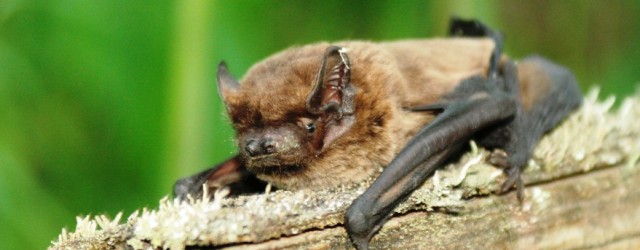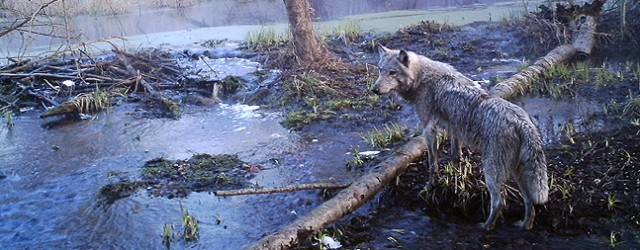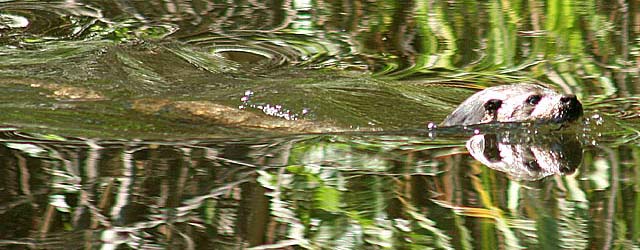
Once got in astonishment from the trail cameras results, it is hardly possible to avoid the wish to repeat these emotions more and more. This passion is like narcomania, and poignant waiting is treated only by new pictures and new cameras. Though pure scientific interest was in the beginning, it is easy to lose the head in game chasing excitement. A year ago I forked out for the first digital camera, and today already four cameras are out in the woods, but still they are few. Why did I get it, and why did this passion become so steady?
The Exclusion Zone is a huge and mostly forest region, keeping plenty mysteries out of uninitiated eyes. Even at days-long hikes, when you are tete-a-tete with wild nature, there are few chances to meet some animal. Critters are ingenious and reveal your appearance in advance. Signs of their presence are everywhere, but you should endeavor in order to see the animal. Automatic cameras allow to get it rather efficiently and wildlife friendly. Animals do not care a lot of alien object while for the researcher this is a powerful tool telling much more than might be anticipated.
In 2000-2005 when we introduced the trail cameras in Chernobyl, it was a film device, with usually scaring animals white flash, battery consuming like a hungry dog, with slow trigger, and taking at least 30 sec for recovery after the previous shot. The rather expensive film was vulnerable to weather conditions, and had 36 frames only. High price of prints and dependence on studios also curbed excitement of the wildlife photography. However, at the same the trail cameras provided bunch of valuable information.
Camera traps – setting cameras in the area of research
Over 10 years techniques have advanced very far. Easy fitting in hand camera has now less than 1 second trigger, can make a rapid fire shooting and video with sound. It recovers all abilities over few seconds after the previous trigger. Infrared hardly visible flashes or no-glow “black” ones (invisible for human and most of animals eyes) are able to light up10-15m space in front of the camera. At the same it can shoot to 4-10 thousands pictures on one set of batteries, and at not very intensive work it can store operative capacities up to one year in any weather conditions. Moreover, number of modern models are already able to send reduced copies of the pictures on your smartphone or computer. Is it not fantasctic?! Among considerable diversity (there are only more than 30 brands!) not every camera suits for research purposes. Unfortunately so far we have to sacrifice quality of picture in order to get sensitivity, “rapid fire” and vitality. Price of the devices is also not the least since you should be some madman hanging 200-250 dollars somewhere in forests. That is why for the beginning I set a choice on two models of Chinese Little Acorn (5210A and 6210MC), famous brand Bushnell (Trophy Cam HD 119437c) and less famous but getting considerable popularity in the last time DLC Covert (Red 40). Each has pros and cons but it was worthy to do.
Red deer (2012)
The first three cameras have run more 700 days and recorded 26 species of mammals, birds and even insects. In general, the most common photo models are wild boars and elks (moos). It is clear in part since they are really abundant and can roam near the cam long time, and the boars, if appear, flow like a stream. Red deer, raccoon dogs and wolves are more rare. Amazingly, but such common for the region forest species as roe deer passes the cams as rare as badger or birds of prey. Red foxes and hares are occasional. The point of correspondence of the footage to actual abundance and diversity of animals is an open question as it definitely depends on where and how the cameras were installed, and in what season it was done. However, undoubtedly, it is much more than just ungrounded judgments on what there could inhabit.
Quality of pictures allows to distinguish ungulates individually, and to figure out their population on the area. This is very useful in respect of nocturnal and dusk animals.
Photos of night shooting animals camera traps
The very delicate features of the wildlife biology can be revealed due to the trail cameras. You absolutely do not expect to find out that wolves fish sometimes, that wolves and ungulates regularly replace each other on the spot over relatively short term. It is fun to see, when big white tailed eagle doesn’t mind to catch little fish, when wild boars compete for right to lie in a strictly particular mud bath within large marsh. I never thought, that local owls have some interests in streams. I was surprised to see newborn piglets in September, while as usual it takes place in spring. Due to July pictures it was found out that bullfinches (which we considering only like wintering birds here) stay in Chernobyl in breeding season.
Winter pictures showed that deep snow and ice over snow compel number of animals to leave the open landscapes.
Winter photos wildlife in the Chernobyl exclusion zone
But the most exciting “bomb” pictures, both on beauty and rapture, which I ever got over the year, were photo-records of lynx, one of the most awesome critter of our forests. The fact, that they are here, and they are periodically observed, and even that poachers hunt for them, was known for a long time. But, to catch it by camera and get it like in zoo, in all nature beauty, costs long-term efforts! By the way, only on one location there were two or three individuals recorded.
Photo – Lynx in the Chernobyl exclusion zone (2012)
It would be wrong to think that all critters are yours, just only hang a camera somewhere. Results of shooting in a considerable extent is a product of long-term experience, knowledge and understanding of wild nature. Principles of the trail cameras work should be understood as well. In order to install or take off the camera a special exhausting expedition has to be arranged. Boundless forests, marshes, absence of roads and passes, wild boars’ ruts, all these are supplemented by clouds of mosquitoes in summer and deep snow in winter. To define an appropriate spot is not a simple task, to get there costs a lot of efforts. But it makes 90% of success.
In 2012 we began works on description of the most valuable natural complexes worthy increase of conservation status. Challenges of this task are caused by huge size of the territory and season changes in its habitants’ life. Automatic photography is a great help. It allows to assess real richness and diversity of fauna, and recording of “Red List” species at that is the best evidence of the lands value. It has been done since July to January in respect of forests, meadows and marshes stretched along Uzh river between villages Glinka and Novosilky. Richness of the local nature is worthy of a separate story. In February 2013 the trail cameras were moved to vast woods of Western part of the zone. Old oak-hornbeam and mixed forests, wild even on Chernobyl scale, are extremely favor for rare species. The current main goal is events of winter end and the spring beginning. How did the wildlife survive in so uneasy conditions, with what inputs does it come to the breeding season, who hides in Chernobyl thickets? Is this world really so rich, or it just seems so? And, who knows, maybe Fortune will smile and some “Big Foot” will look into the camera…
At installation and service of the cameras Naglov Aleksander, Gulyaichenko Eugene and Paskevych Sergey took part. A help for purchasing of not the cheapest equipment was provided by Verkhovsky Pavel. Without their support the results presented here might be much more modest, if possible at all.
Gaschak S.P. (International Radioecology Laboratory, Slavutych)



































